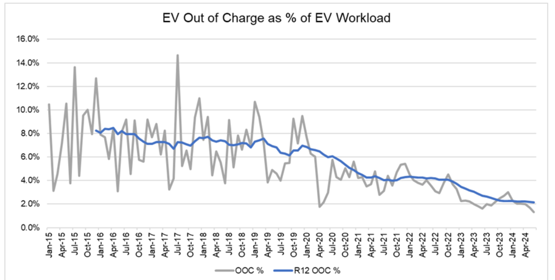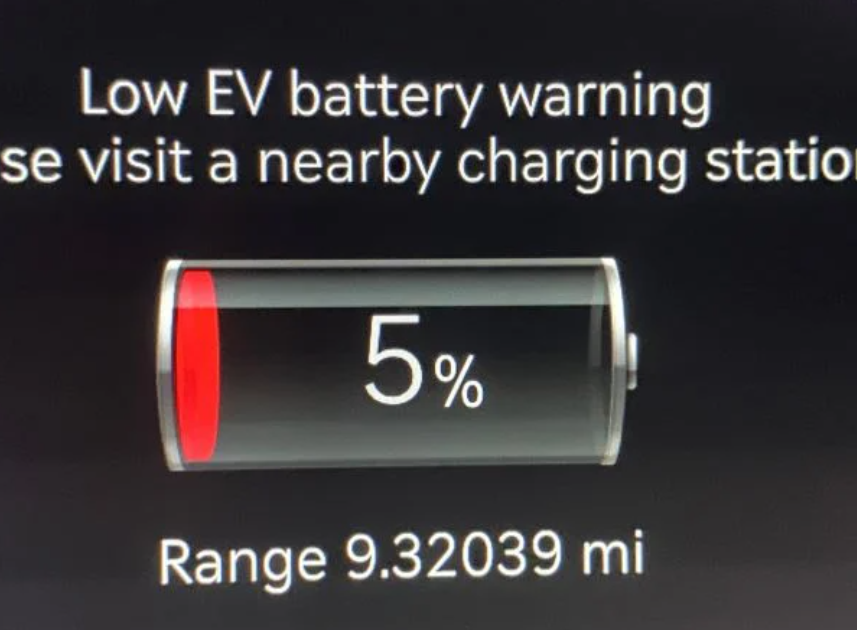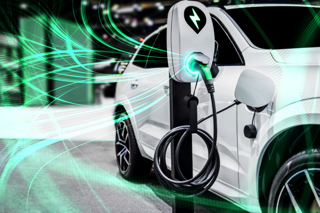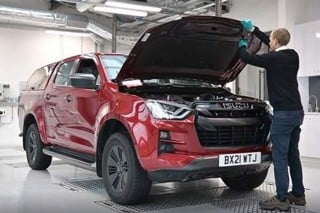The proportion of electric vehicles (EVs) in the UK running out of charge reached its lowest ever in June, according to new analysis by the AA motoring organisation.
In June, the percentage of out-of-charge breakdowns for EVs, calculated as a share of all EV breakdowns, hit a record low of 1.4%.
The rolling 12-month figure also achieved a record low at 2.2%. This is a significant drop from previous years: 1.6% in June last year, 2.8% in June 2021, and 4.6% in June 2019.
The proportion of electric vehicles (EVs) in the UK running out of charge reached its lowest ever in June, according to new analysis by the AA motoring organisation.
In June, the percentage of out-of-charge breakdowns for EVs, calculated as a share of all EV breakdowns, hit a record low of 1.4%.
The rolling 12-month figure also achieved a record low at 2.2%. This is a significant drop from previous years: 1.6% in June last year, 2.8% in June 2021, and 4.6% in June 2019.
The AA said that the UK trajectory for AA EV breakdowns is similar to that of NAF in Norway, which has the highest EV penetration in Europe.
Advances in battery technology, increased range, better charging performance and reliability, improved charge post support, and enhanced driver and dealer knowledge have all contributed to the decline.
Although the AA handles approximately 8,000 breakdowns daily across all vehicle categories, it deals with only 5 or 6 out-of-charge EVs per day. Often, these vehicles are not actually out of charge but are low on charge, with drivers concerned about reaching the next charging station.
In 2015, the number of out-of-charge EV breakdowns was 8% of all EV breakdowns. This figure dropped to 4% in 2021/22. From October 2022 to October 2023, the average out-of-charge rate was 2.3%, with about 50% of these cases involving vehicles low on charge.
In June 2023, the rate fell to just 1.4%. The AA anticipates this figure to eventually drop to 1%, aligning with the rate for petrol and diesel vehicles running out of fuel.
Edmund King, AA president, commented: “In the last eight years, the proportion of EVs running out of charge has decreased by about 80%, thanks to the increased number and reliability of chargers, better charge post support, improved range of newer EVs, and better driver education and information.
“We understand why many drivers have been hesitant about switching to EVs as it is a massive change, but it is important that their decisions are based on accurate information. Once drivers have made the switch, the vast majority will not look back.”
The AA also found that the top 30% of breakdown faults for EVs are almost identical to those for petrol and diesel cars, typically involving tyres, wheels, and the 12V battery.

Login to continue reading
Or register with AM-online to keep up to date with the latest UK automotive retail industry news and insight.



















Login to comment
Comments
No comments have been made yet.